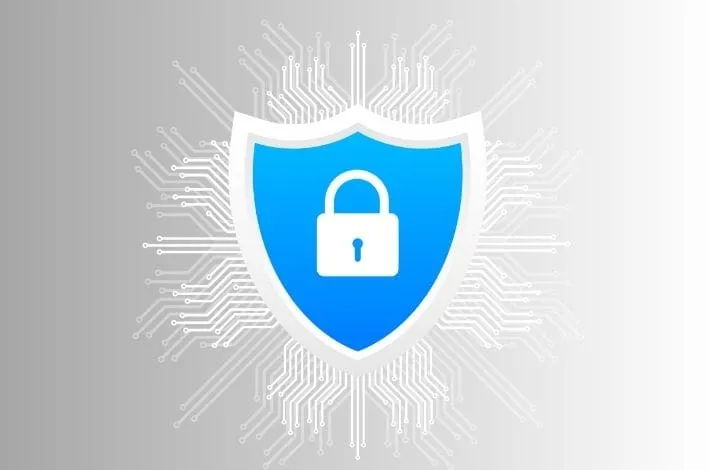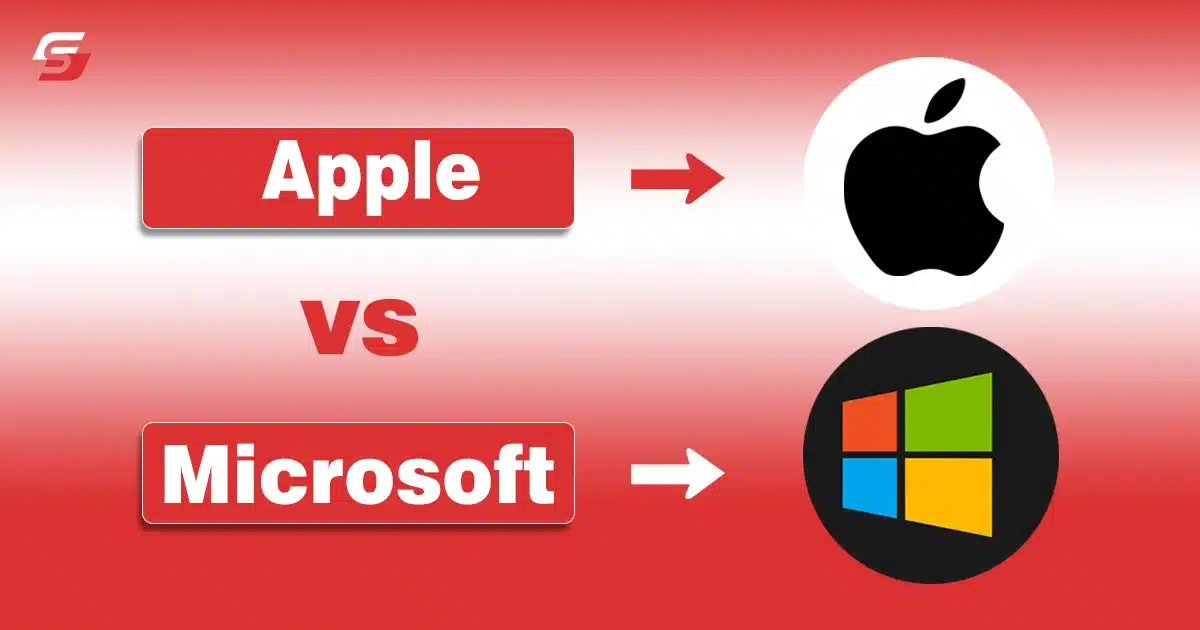Comparing the security of Apple vs Microsoft security systems is complex, as both companies prioritize user safety and continuously enhance their security measures. Apple’s macOS and iOS focus on hardware-software integration, stringent app store controls, and data encryption.
On the other hand, Microsoft’s Windows OS provides Windows Defender, BitLocker, and regular security updates. Determining which system offers better security depends on individual preferences, requirements, and ecosystem preferences.
Both companies have dedicated teams to address security vulnerabilities promptly. Thus, they have made it crucial for users to stay informed about their latest advancements to get reliable and secure computing experiences.
Apple vs Microsoft Security Comparison
Below I have detailed Apple vs Microsoft operating systems security comparison to help you decide on one that is safe and secure.
1) Both Operating Systems offer boot-up protections
Apple macOS and Microsoft Windows, two of the most important working systems, include boot-up protections to reinforce machine protection.
Windows
Windows makes use of Secure Boot to make sure that the most effective relied on firmware and working gadget additives can load at some point during a startup. Thus, they successfully resist unauthorized code and defend against boot-time malware like rootkits.
Additionally, Windows capabilities BitLocker, supplying complete-disk encryption that safeguards data from unauthorized get admission.
macOS
In comparison, macOS leverages the Apple T2 protection chip in a few devices to verify the boot procedure and uphold the integrity of gadget documents.
For data protection, macOS offers File Vault, enabling disk encryption. These essential boot-up protections safeguard operating systems against potential threats and preserve users’ data security.
2) Both Operating Systems offer Out-of-the-box malware and antivirus protection
Windows and macOS have built-in malware and antivirus protection to safeguard users’ systems. However, their functionalities are different. For comprehensive security, it is recommended to regularly update the operating system and consider using third-party antivirus solutions to defend against evolving threats.
Windows
In Windows, Windows Defender provides real-time protection against viruses, malware, spyware, and other threats, and it automatically updates to stay current. Additionally, Windows SmartScreen helps block malicious websites and downloads.
macOS
On macOS of MacBooks, XProtect and Gatekeeper work together to prevent the execution of known malware and block applications from unidentified developers. These native security features ensure that users have basic protection right from the start without requiring additional software installation.
3) Both operating systems offer accessibility to safe app stores
Windows and macOS offer secure and curated app stores, ensuring a safe environment for users to download software. Users can confidently explore and download various applications by relying on these app stores, knowing they are safe and reliable.
Windows
On Windows, the Microsoft Store serves as the official platform for app distribution, guaranteeing that all listed applications undergo thorough security and quality screening. It minimizes the risk of downloading malicious software and enhances overall system stability.
macOS
Similarly, macOS provides the Mac App Store, where strict review processes ensure users can access verified and safe applications. These app stores boast user-friendly interfaces, simplifying the process of finding and installing software without compromising system security.

4) Built-in hard disk encryption capabilities are offered in both operating systems
Windows and macOS offer built-in tough disk encryption abilities, strengthening data security. It helps in securing your data in case of breach.
Windows
In Windows, the local feature referred to as BitLocker offers complete disk encryption, effectively protecting statistics from unauthorized get admission to. Users can encrypt their gadget drives or external storage gadgets, ensuring the safety of touchy statistics even if the hardware is misplaced or stolen.
macOS
Similarly, macOS includes File Vault, which permits encryption for the complete startup disk, safeguarding records at rest and preventing unauthorized right of entry to to documents and folders. You should utilize these integrated encryption gear for an additional layer of data privacy and security.
5) Own default browsers with built-in safety features in both operating systems
Windows and macOS include default web browsers with integrated safety features. Microsoft Edge is available on Windows, while Apple offers Safari on MacBooks. Regular updates from their builders make certain these browsers live updated with the present-day protection enhancements, supplying users with a safer and greater secure net surfing enjoy on each running systems.
Windows
Microsoft Edge is the default browser on Windows, offering SmartScreen to shield users from phishing and malware-infected websites. It also incorporates Tracking Prevention for improved online privacy.
macOS
Meanwhile, macOS features Safari as its default browser, ready with Intelligent Tracking Prevention to dam tracking cookies and decorate consumer privacy. Whether you download Apple Clipart Images or peform casual browsing, you are all secure.
6) Both OSs have problems with Data tracking and harvesting
Both Windows and macOS face concerns regarding data tracking and generating. Although it does not directly impact the users, parent companies struggle a lot. Both operating systems continue to address these concerns, offering users more control over data sharing, transparency in data practices, and privacy settings to balance data collection and data privacy for system improvement and user privacy.
Windows
In Windows, some users have expressed worries about data collection practices by Microsoft, such as telemetry data for system improvement, which some consider intrusive. Although users can control certain settings, privacy concerns remain.
macOS
On the other hand, macOS has faced criticism for data collection through the App Store and Safari. Although Apple emphasizes user privacy and allows some control over data sharing, there have been debates about app developers accessing personal data without explicit consent.
Final Thoughts
These are the details about the Apple vs Microsoft security. Establishing one OS as “more secure” than others is challenging because security is not a standalone feature that can be added or removed. Instead, security is a complex aspect that needs to be an inherent part of an operating system. Thus, it is increasingly crucial to prioritize endpoint security with automated detection and prevention capabilities across all systems, irrespective of the OS, as every OS has vulnerabilities.
In today’s diverse network environments, having visibility across the network to detect and trace attack indicators is vital. Businesses must rely on OS security features, implement integrated security software solutions, and promote best security practices among employees.


